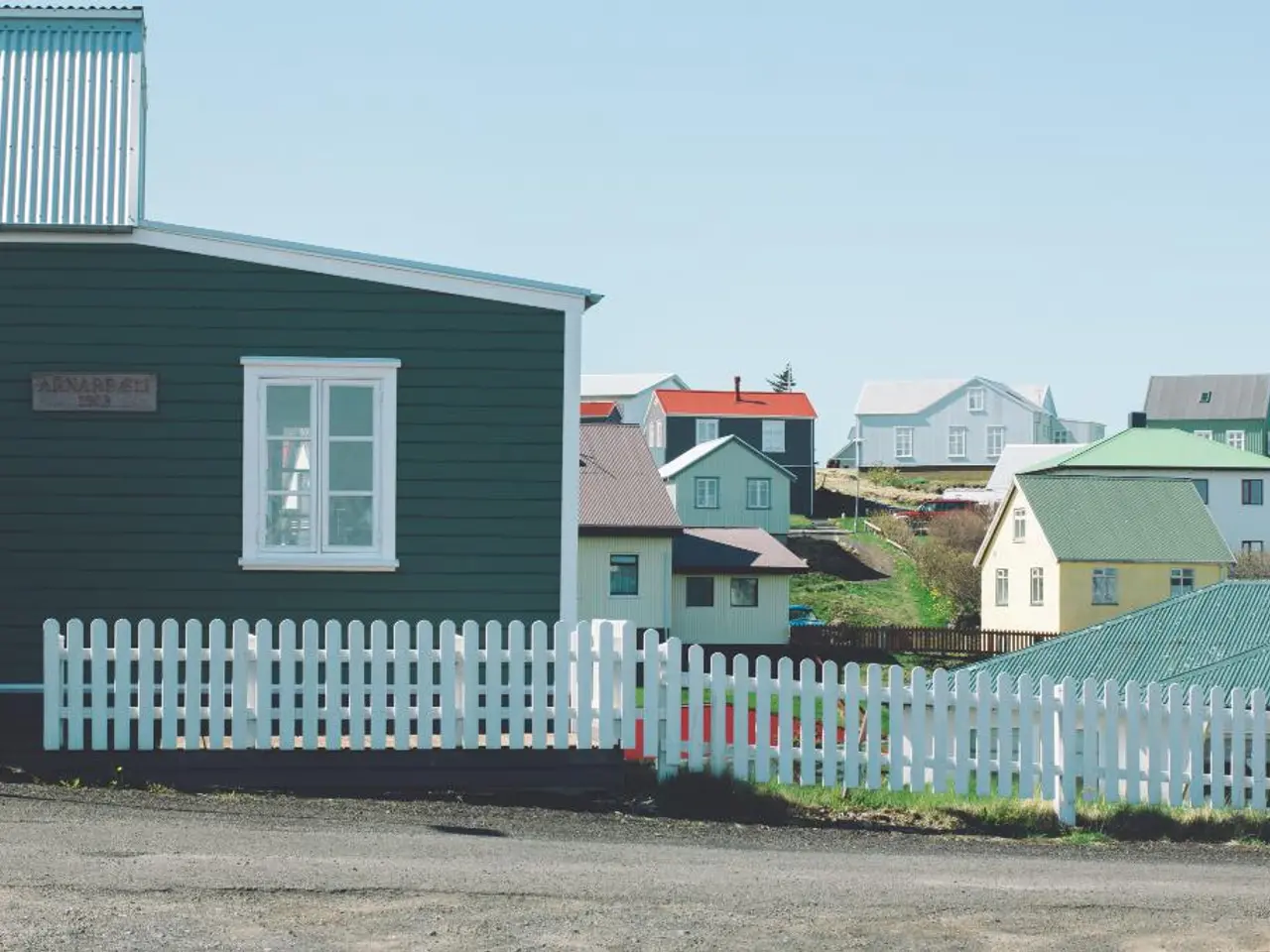Nationwide increase in house prices in June, yet the real estate market continues to exhibit a sluggish tempo
The UK home market continues to evolve, with key developments shaping the landscape over the past year. As of now, the average home price in the UK stands at £266,064, a figure that has remained relatively stable despite the economic fluctuations. London remains the most expensive region, with an average property price of £541,615, while the average home price across all southern regions is £369,580. Interestingly, home prices in Southern England have experienced a minor decline of 0.3% year-on-year. Elsewhere in the country, Scotland and Wales have seen a 1.4% increase in home prices year-on-year, and Northern England has experienced a 2.4% rise. The most significant growth, however, can be observed in Northern Ireland, where home prices have surged by 4.2% year-on-year. Despite these changes, the home market activity has been broadly flat over the past year. The total number of transactions is down by around 15% compared to 2019 levels, and cash transactions are now 5% above pre-pandemic levels. This trend suggests a shift towards more cash-based transactions in the property market. Higher interest rates, a result of the Bank of England's efforts to combat inflation, have been dampening the home market. The base rate has been at a sixteen-year high since August last year, and while interest rates are expected to be cut later this year, potentially as soon as 1 August, they are unlikely to return to ultra-low, pre-pandemic levels any time soon. Political parties have also been active in shaping the home market landscape. The Conservatives have promised to permanently raise the stamp duty threshold for first-time buyers to £425,000 and deliver a new 'Help to Buy' equity loan scheme. Labour, on the other hand, has pledged to extend the existing mortgage-guarantee scheme through its 'freedom to buy' policy. Despite the economic challenges, millions of mortgage holders have yet to feel the full impact of higher interest rates. This is because many borrowers are still protected by cheaper rates arranged before the Bank of England's rapid series of rate rises started in late 2021. Despite the average home price being £266,064, it's important to note that the average home is still almost £20,000 above affordability levels for many potential buyers. This underscores the ongoing challenge of making housing affordable for all. As we move forward, it will be interesting to see how these developments unfold and how they impact the UK home market.
Read also:
- The Cost of Speech is Zero, True Strength Lies in Unity
- Aiming to simplify the move towards cleaner automobiles, the newly established ministry plans to take direct action with Pannier-Runacher, Létard, and Vautrin at the helm.
- "The imperfect yet essential documentary, "Planet of the Humans," raises challenging and uncomfortable inquiries"
- Exciting Escapades of Tintin




